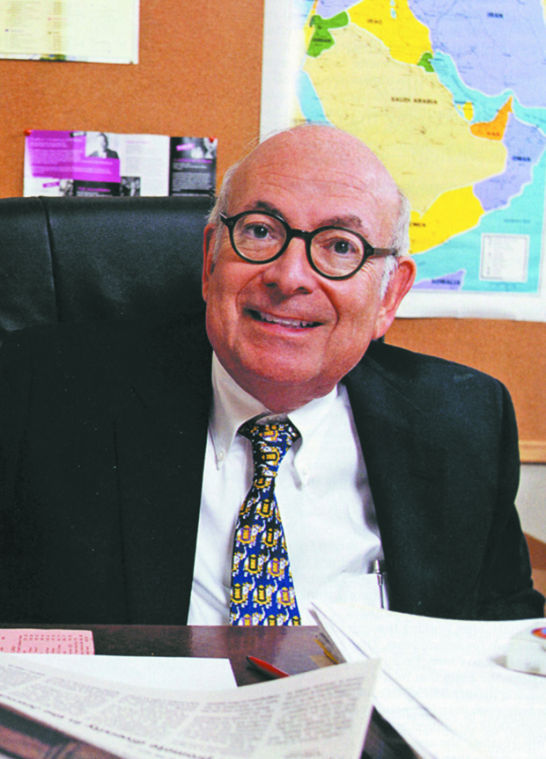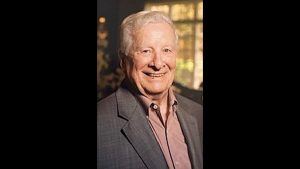‘Big 250’ for founding of St. Louis gives Jews cause to celebrate
Published January 23, 2014
This year marks the “Big 250,” the sestercentennial of the founding of St. Louis as a French trading post for the Maxent-Laclede Co. in 1764.
This milestone will be celebrated with many special events throughout the year– including one at the St. Louis Holocaust Museum (see article below). In many ways, it makes perfect sense that the Jewish community of St. Louis would be eager to participate in the festivities, especially because it traces its origins to 1807.
In the late Walter Ehrlich’s two-volume “Zion in the Valley,” which tells the definitive story of local Jewry, he quotes the late Rabbi Jacob Rader Marcus, the “undisputed dean of American Jewish historians,” who said: “No Jew is ever the first Jew anywhere. There has always been at least one there before him.”
ADVERTISEMENT
Marcus’s observation is very wise. Nevertheless, Ehrlich and other local Jewish historians are in agreement that the first permanent Jewish resident of St. Louis was Joseph Philipson, of Polish or German descent, who moved to St. Louis from Philadelphia in 1807. It is possible, even probable, that other Jews sojourned to, or through, St. Louis prior to 1807, but while the Louisiana Territory was briefly under Spanish control until 1800, when it was ceded back to France, Jews could not legally settle here.
By the time Philipson arrived in St. Louis in 1807, what is now St. Louis, Mo., was clearly part of the United States of America.
Ehrlich cites a “seminal” article by Bernard A. Ehrenreich, a St. Louis businessman, which appeared in the respected St. Louis Jewish newspaper the Modern View in 1935. It was headlined “Three Brothers: A Saga of St. Louis’ First Jewish Family,” whom he identified as Joseph, Jacob and Simon Philipson, who preceded previous credible possibilities by almost a decade.
ADVERTISEMENT
Ehrenreich’s claim was bolstered by a Columbia University doctoral student’s research by Sister Marietta Jennings, which named the Philipsons as the first St. Louis Jews that used solid documentation. Later, in the 1950s, Donald Makovsky, who was chairman of the St. Louis Jewish Historical Association, would build on the work of his predecessors for his comprehensive monograph on the Philipsons, also establishing them as the first Jews in St. Louis.
Makovsky also wrote his master’s thesis on the origins and early years of United Hebrew Congregation, which traces its origins back to 1837, three decades after the arrival of Joseph Philipson in St. Louis. Philipson, who died in 1844, at the age of 71 is buried in the cemetery, along with his brother, Simon, and his wife.
Philipson and his brothers, while still in Philadelphia, became successful businessmen, primarily dealing in furs and lead. They decided to move to St. Louis, where both furs and lead were major pillars of the economy, and the city was on its way toward becoming the fourth-largest in the United States.
Joseph Philipson was selected to be the first to move to St. Louis, and his own records indicate that he arrived here Dec. 13, 1807. The company began to thrive, expanding from its original location to 12 stores, including one that was located on Main Street between Spruce and Pine streets on the grounds of what is now the Gateway Arch.
Among the prominent early St. Louisans whose names appear on the Philipson account book are Alexander McNair, the first governor of Missouri; Auguste and Pierre Chouteau; Merriwether Lewis (of Lewis & Clark); and Frederick Bates, several times acting governor of the territory and later governor of the State of Missouri.
Of note is the fact that Joseph Philipson “also stands out as one of the pioneers of the renowned St. Louis beer industry,” Erhlich writes in his book. Philipson is considered by some historians to have been the first brewer not only in St. Louis, but the first west of the Mississippi, though later research suggests that others may have preceded him.
Although the Philipson brothers never disguised their Jewishness, no evidence suggests that they were active in early communal activities, including the founding of United Hebrew Congregation. Philipson was eulogized for his strong support of music, culture and other artistic assets in St. Louis, but not for Jewish communal efforts.
When St. Louis celebrated is bicentennial in 1964, Makovsky was named chairman of the St. Louis Jewish Educators Bicentennial Committee. The May 17, 1964 edition of the Light reports the committee was created by the St. Louis Rabbinical Association to plan celebrations of the 200th anniversary of St. Louis throughout that year.
Several key Jewish community and arts leaders are serving on the board of directors of stl250, which is planning and overseeing the events to commemorate the city’s 250th anniversary. For a complete list, including a huge, family-friendly “Birthday Bash” Feb. 14-16 at the History Museum, go to stl250.org.
















